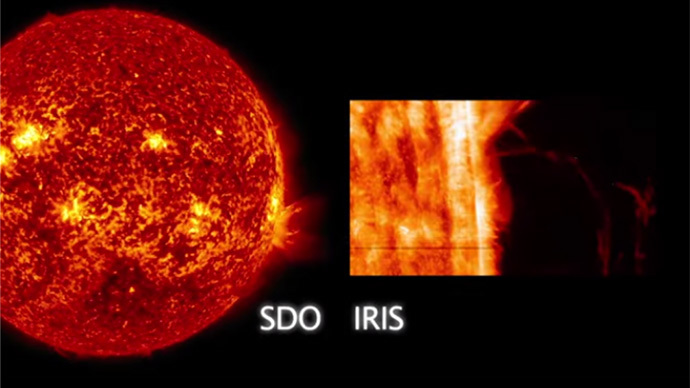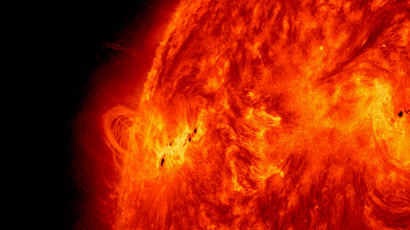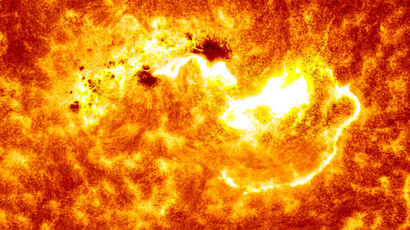NASA captures close-up details of solar storm for first time (VIDEO)

NASA’s revolutionary solar observatory has captured rare footage of super-hot bubbles on the sun's surface, known as coronal mass ejections.
“The field of view seen here is about five Earths wide and about seven-and-a-half Earths tall,” NASA said in a description of the video, which shows the sun emitting flares into space.
While coronal mass ejections (CMEs) are not rare themselves (there can be up to two or three CMEs per week depending on the sunspot cycle), this time is different – because for the first time, the process was caught on camera by NASA's Interface Region Imaging Spectrograph, or IRIS.
The seven-foot ultraviolet telescope was launched into space in June 2013. It is able to peer into the lowest levels of the sun's atmosphere to observe how solar material moves, gathers energy, and heats up. It then documents the details using higher resolution imaging than ever before.
To capture the phenomenon, IRIS must be pointed at the sun one day ahead of time. It “involves some educated guesses and a degree of luck,” as it only covers a relatively small zone of the sun at any given time, according to NASA.
“We focus in on active regions to try to see a flare or a CME," said Bart De Pontieu, the IRIS science lead at Lockheed Martin Solar & Astrophysics Laboratory in Palo Alto, California. "And then we wait and hope that we'll catch something. This is the first clear CME for IRIS so the team is very excited."
The spectacular phenomenon was captured on May 9, but NASA only released the video on May 30.
CMEs are powerful eruptions on the sun’s surface that send waves of magnetized plasma through the solar system. They can strike the Earth’s atmosphere with bursts of particles and can cause electromagnetic fluctuations.
The first proof of CMEs was obtained with a coronagraph on the OSO 7 spacecraft between 1971 and 1973.













